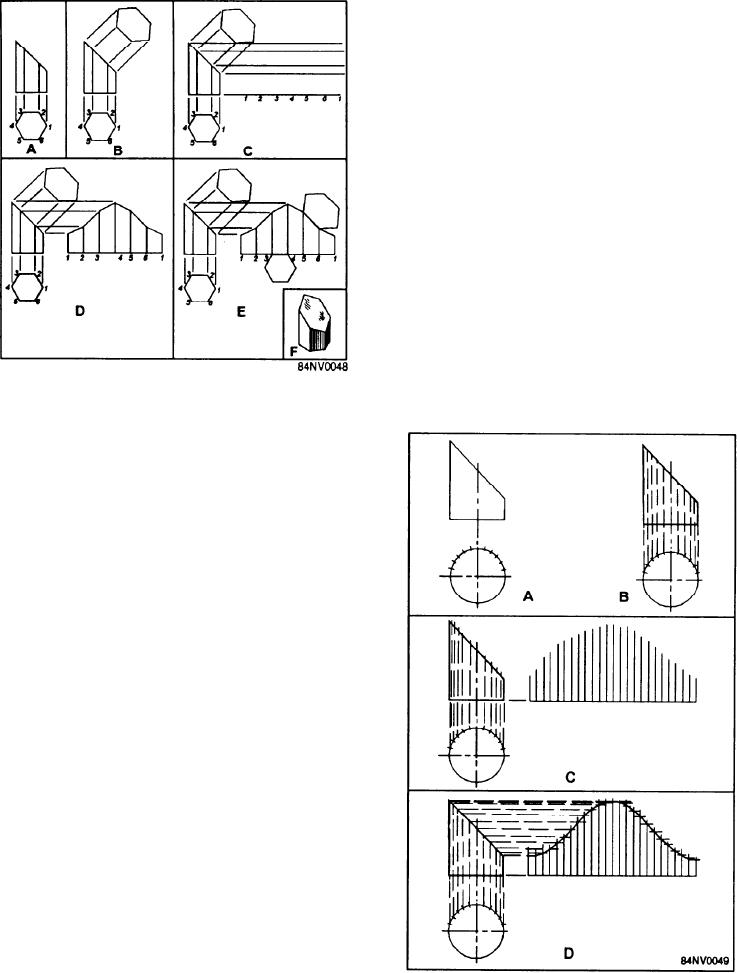
The truncated cylinder is a prism with an infinite
number of sides. The number of sides must be limited
when developing a cylinder. However, the greater the
number of sides, the more accurate the development.
The following steps for the development of a truncated
cylinder are shown in figure 14-43.
1. To develop one-half of a two-piece elbow, first
draw a front and bottom view of that piece in
orthographic projection (view A). Since the
elbow does not require an end piece, you do not
need to draw an auxiliary view showing the true
shape of the ellipse formed by the cutting plane
at the top of the cylinder.
2. Divide half the circumference of the circle into
several equal parts. The parts should be small
enough so a straight line drawn between
division points will approximate the length of
the arc. Project lines from these points to the
front view (view B). The resulting parallel lines
on the front view are called elements.
Figure 14-42.--Development of a truncated hexagonal prism.
1. Draw a front view and a bottom view of the
prism in orthographic projection (view A).
2. Draw an auxiliary view (view B) since the true
shape of the slanting plane and the length of the
lines of its edges are not shown in these views.
Note that drawing the entire prism in the
auxiliary view is not necessary. Only the
dimensions of the plane surface are required.
3. Project the lines of the front view horizontally
as the first step in constructing the development
(view C).
4. Number the points of intersection of planes on
the bottom view. Mark off line segments of the
same length on the base line of the development.
5. Erect vertical lines from these numbered points
to intersect the lines projected from the front
view of the prism (view D). These intersections
mark the comers of the prism.
6. Connect the intersection points with straight
lines.
7. Draw the bottom of the prism attached to one of
the sides at the base line. Draw the slanting
plane at the top of the prism (view E).
8. Check all edge measurements to be joined, as
shown in the pictorial drawing (view F), to be
Figure 14-43.--Development of a truncated cylinder.
sure they will coincide exactly.
14-27

